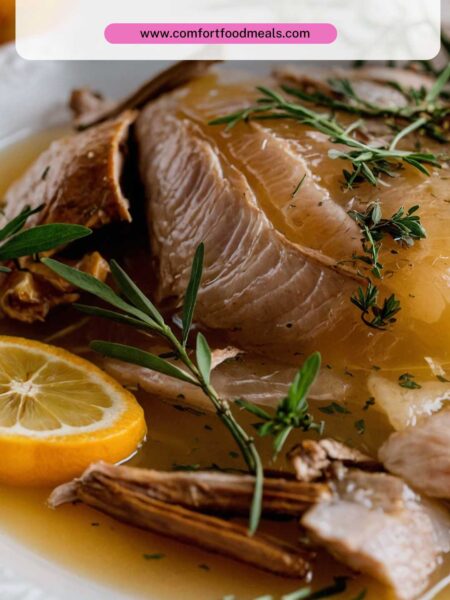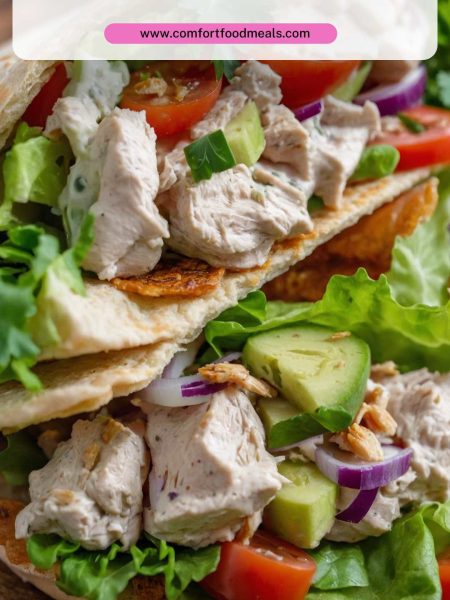Before diving into the delicious details of hibachi shrimp, let’s consider how to make this dish shine even brighter. Hibachi shrimp is naturally flavorful, but pairing it with the right sides transforms it into a full-fledged meal.
1. Fried Rice
Hibachi shrimp thrives alongside fried rice. The savory notes of soy sauce mixed with a bit of garlic elevate this classic side. Whether you use leftovers or whip up a fresh batch, the rice’s texture complements the shrimp perfectly.
2. Grilled Vegetables
Zucchini, bell peppers, and mushrooms tossed on the grill add color and nutrition. Their smoky taste enhances the umami flavors of the shrimp while adding fresh elements to your plate.
3. Fresh Salad
A vibrant salad with greens, cucumbers, and a light vinaigrette can provide a refreshing contrast to the rich flavors of hibachi shrimp. The crunch from the vegetables balances out the dish beautifully.
4. Egg Rolls
Crispy egg rolls filled with vegetables or shrimp can offer a delightful crunch. They make an excellent appetizer or side dish, adding variety to your meal.
5. Sautéed Edamame
This simple yet flavorful side brings in protein and is perfect as an appetizer. Lightly salted edamame pairs well with hibachi shrimp, as they offer a different texture and taste.
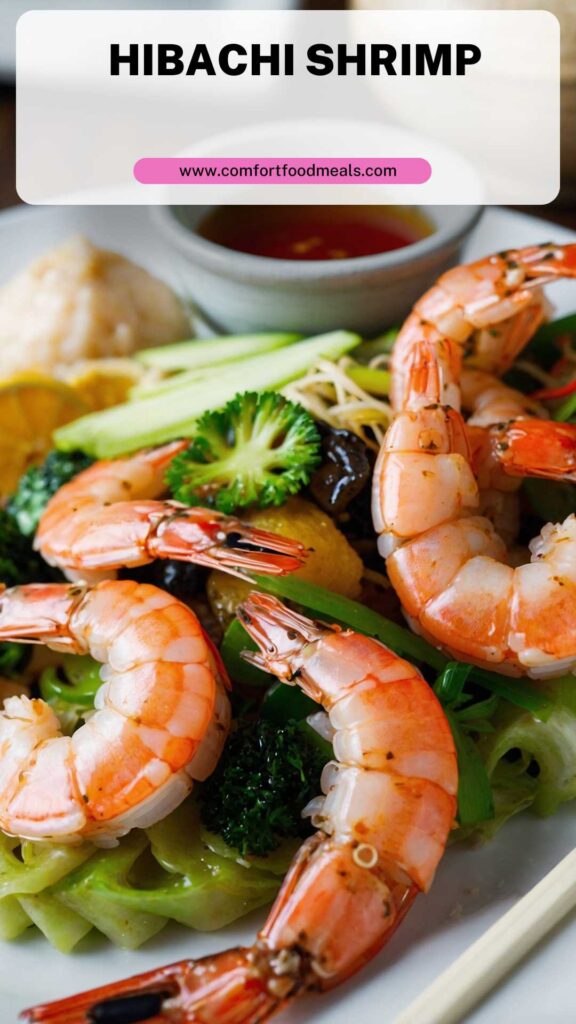
Hibachi shrimp—just saying those words can make my mouth water. If you’ve ever watched a skilled chef flip shrimp in the air over a hot grill, you know the excitement. This dish is not only delicious but also versatile and fun to prepare.
As a food blogger and a registered dietitian, I thrive on sharing recipes that balance taste and nourishment. The beauty of hibachi shrimp lies in its simplicity and the ability to add your personal twist. In this article, let’s take an in-depth look at hibachi shrimp, explore its ingredients, and encourage you to recreate the magic in your own kitchen.
You Might Also Like These Recipes!
What is Hibachi Shrimp?
Hibachi shrimp refers to shrimp cooked on a high-heat grill or griddle, often associated with Japanese cuisine. While hibachi cooking traditionally involves charcoal heating, many modern variations use gas grills or electric griddles.
The shrimp are typically tossed with a combination of soy sauce, oil, garlic, and sometimes ginger, which creates a delightful marinade. The quick cooking method retains juicy shrimp that are bursting with flavor.
Inviting friends or family over for a hibachi night not only creates a lively atmosphere, but it also allows everyone to customize their plates with various sides, sauces, and seasonings. This communal aspect makes cooking hibachi shrimp an experience worth cherishing.
Why You’ll Love Hibachi Shrimp
First off, hibachi shrimp is a true winner in the flavor department. The combination of soy sauce, olive oil, garlic, and ginger creates a tantalizing profile that dances on your palate. The lightly charred outer layer of the shrimp seals in the natural juices, resulting in beautifully succulent bites.
Secondly, it’s quick to prepare. With everything cooking on high heat, you’re looking at a meal that can be whipped up in less than 20 minutes. Perfect for busy weeknights or unexpected guests!
Moreover, customization is key. Add a splash of lemon juice or even pineapple for sweetness. Mix in veggies like bell peppers and zucchini, and you create a colorful, nourishing dish. Trust me; the vibrant colors on your plate will have everyone reaching for their phones for a quick photo.
From my experience, hibachi shrimp is a hit among both adults and kids. It’s easy to eat, appealingly garnished, and comes with an array of pairing possibilities that can satisfy even the pickiest eaters.
The Ingredients You Will Need To Make Hibachi Shrimp
When preparing hibachi shrimp, gather the following ingredients:
- 12 ounces peeled and deveined shrimp (about 28 pieces): Choose large shrimp for the best flavor and texture.
- 2 medium zucchini, sliced into long thin wedges (approximately 3 cups): Their slight crunch complements the shrimp.
- 1/4 cup light soy sauce, divided: This adds savory depth to the dish.
- 1 small white onion, thinly sliced (about 2 cups): Onions add sweetness and serve as a perfect complement.
- 4 tablespoons extra virgin olive oil, divided: Essential for cooking and adding richness.
- Juice of 1/2 fresh lemon: Brightens up the entire dish.
- 2 garlic cloves, finely minced (around 2 teaspoons): Provides aromatic richness.
- 1 teaspoon freshly grated ginger: Adds warmth and a zesty kick.
- 1/2 teaspoon crushed red pepper flakes (optional): For a touch of heat to wake up the flavors.
Directions
Step 1: Prepare the Ingredients
Start by gathering all your ingredients. Peel and devein the shrimp if they aren’t already. Thinly slice the zucchini and onions. Mince the garlic and ginger. Prepare those ingredients like you’re about to embark on a cooking adventure.
Step 2: Marinate the Shrimp
In a bowl, combine half the soy sauce with two tablespoons of olive oil, garlic, ginger, and lemon juice. Toss in the shrimp. Let them marinate for about 10 minutes while the grill heats up. If you want extra zest, add some crushed red pepper flakes.
Step 3: Heat the Grill or Griddle
Fire up your grill or preheat an electric griddle over medium-high heat. It needs to be hot for perfect searing. If using a grill, lightly oil the grates to prevent sticking.
Step 4: Grill the Vegetables First
Add the zucchini and onions to the grill. Drizzle with a tablespoon of olive oil and a pinch more soy sauce. Sauté for approximately 3-4 minutes until they begin to char slightly. This step releases their natural sweetness.
Step 5: Cook the Shrimp
Once the vegetables are tender but still crisp, push them to the side of the grill and add the marinated shrimp. Cook for about 2-3 minutes on one side, then flip to the other. The shrimp will turn pink and opaque, indicating they’re ready.
Step 6: Combine and Serve
Once the shrimp are cooked, stir everything together. Let the flavors mingle for a minute or two, and then remove from the heat. Serve immediately, garnishing with fresh herbs if you like.
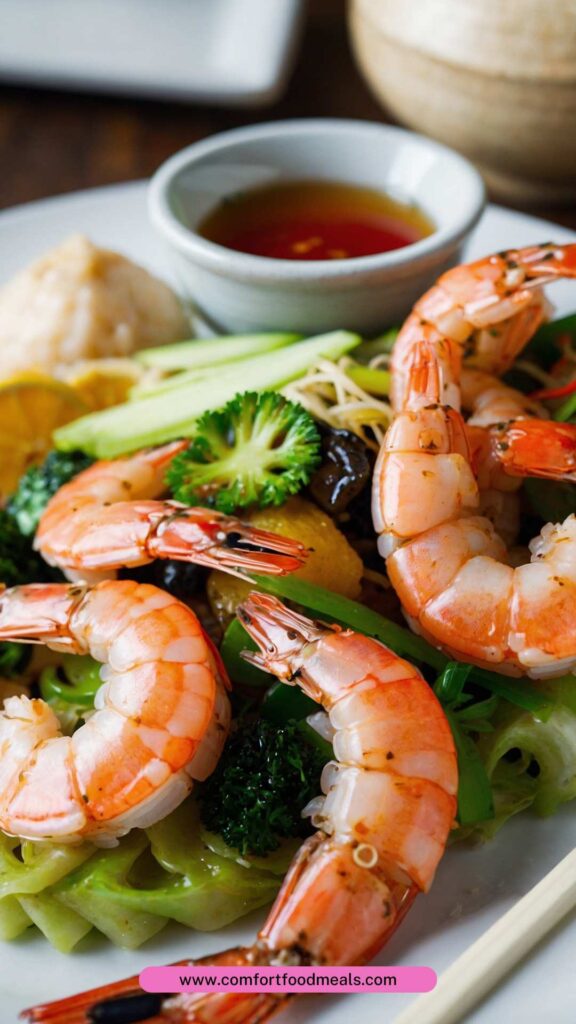
Notes
Here are several tips to ensure your hibachi shrimp turns out perfectly:
- Choose the Right Shrimp: Opt for fresh or high-quality frozen shrimp. Smaller shrimp might overcook easily.
- Preheat Your Grill: A hot grill ensures a good sear. If it’s not hot enough, the shrimp will steam instead of sear.
- Don’t Overcrowd: Cook in batches if necessary. Overcrowding the grill can lead to uneven cooking.
- Experiment with Marinades: You can tweak the marinade ingredients to match your taste. Try adding honey for sweetness or sesame oil for extra richness.
- Double the Recipe: If you know you’ll have leftovers, double the ingredients. Hibachi shrimp tastes excellent the next day in salads or wraps.
Storage Tips
Leftovers? No problem! Store any uneaten hibachi shrimp in an airtight container in the fridge. It’ll keep for about 2-3 days. If you want to keep it longer, consider freezing the cooked shrimp. When ready to eat, thaw it in the fridge overnight and reheat gently on the stove.
Nutrition Information
Approximately per serving (based on 4 servings):
- Calories: 220
- Protein: 25g
- Carbohydrates: 8g
- Total Fat: 10g
- Saturated Fat: 1.5g
- Fiber: 2g
- Sugars: 2g
- Sodium: 600mg
(Note: Nutrition values can vary based on specific brands and preparation methods.)
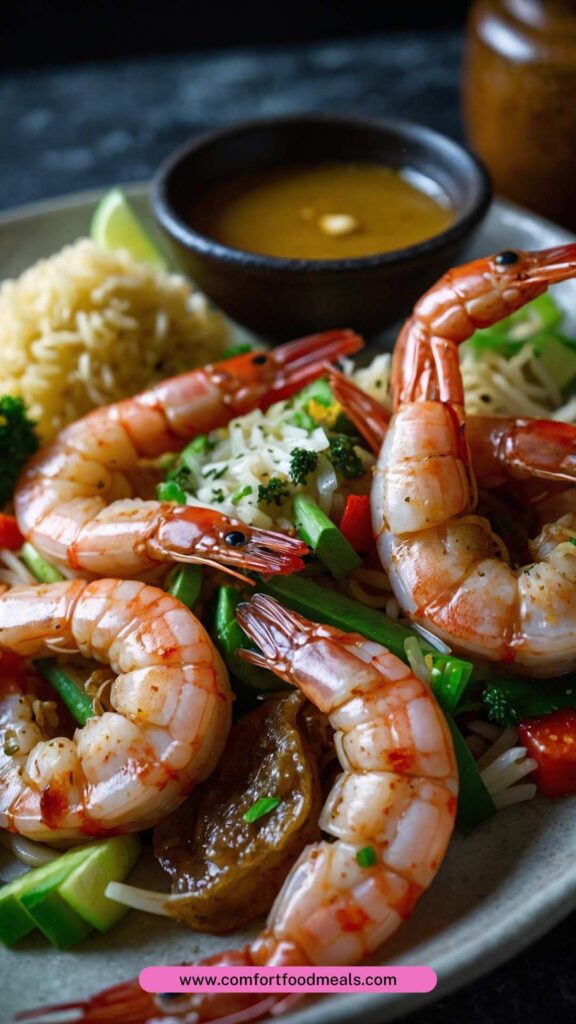
Serving Suggestions
Here are some ways to serve your hibachi shrimp:
- Over Steamed Rice: The simplest way to enjoy hibachi shrimp is to serve it over a bed of fluffy steamed rice.
- With Noodles: Pair it with soba or lo mein noodles to make it a filling meal.
- In Lettuce Wraps: For a low-carb option, serve the shrimp in crunchy lettuce leaves. Add some hoisin sauce for a kick!
- On Skewers: Thread the shrimp onto skewers and create your own hibachi-style skewers for a fun presentation.
- With a Side of Dipping Sauce: Create a simple dipping sauce using soy sauce, rice vinegar, and sesame oil for a flavorful twist.
What Other Substitutes Can I Use in Hibachi Shrimp?
If you want to change things up, consider these substitutes:
- Chicken: Swap shrimp for chicken breast, diced into cubes. Adjust cooking time accordingly.
- Tofu: For a vegetarian twist, use firm tofu. Marinate and grill just like the shrimp.
- Scallops: Tender scallops bring a delicate sweetness. Cook them for a similar duration as shrimp.
- Fish: Fish fillets like salmon or tilapia can be great options. Cut them to uniform sizes for even cooking.
- Vegetables: If you prefer a vegetarian version, increase the amount of veggies. Bell peppers, carrots, or broccoli all work well.
Conclusion
Hibachi shrimp is more than just a dish; it’s an experience. The sizzling sounds, the tantalizing aromas, and the burst of flavors come together to create a memorable meal. Cooking at home not only gives you control over the ingredients but also invites friends and family to share in the culinary fun.
Armed with this guide, you will impress everyone at your next dinner gathering. Whether it’s a fancy date night or a casual cookout, hibachi shrimp can elevate any occasion. So, gather your ingredients, fire up that grill, and dive into the delicious world of hibachi cooking. Share the experience, and here’s to many flavorful evenings ahead!
You Might Also Like These Latest Recipes!

Hibachi Shrimp – Comfort Food Meals
Description
Hibachi shrimp—just saying those words can make my mouth water. If you've ever watched a skilled chef flip shrimp in the air over a hot grill, you know the excitement. This dish is not only delicious but also versatile and fun to prepare.
As a food blogger and a registered dietitian, I thrive on sharing recipes that balance taste and nourishment. The beauty of hibachi shrimp lies in its simplicity and the ability to add your personal twist. In this article, let’s take an in-depth look at hibachi shrimp, explore its ingredients, and encourage you to recreate the magic in your own kitchen.
Ingredients
Instructions
Step 1: Prepare the Ingredients
-
Start by gathering all your ingredients. Peel and devein the shrimp if they aren't already. Thinly slice the zucchini and onions. Mince the garlic and ginger. Prepare those ingredients like you’re about to embark on a cooking adventure.
Step 2: Marinate the Shrimp
-
In a bowl, combine half the soy sauce with two tablespoons of olive oil, garlic, ginger, and lemon juice. Toss in the shrimp. Let them marinate for about 10 minutes while the grill heats up. If you want extra zest, add some crushed red pepper flakes.
Step 3: Heat the Grill or Griddle
-
Fire up your grill or preheat an electric griddle over medium-high heat. It needs to be hot for perfect searing. If using a grill, lightly oil the grates to prevent sticking.
Step 4: Grill the Vegetables First
-
Add the zucchini and onions to the grill. Drizzle with a tablespoon of olive oil and a pinch more soy sauce. Sauté for approximately 3-4 minutes until they begin to char slightly. This step releases their natural sweetness.
Step 5: Cook the Shrimp
-
Once the vegetables are tender but still crisp, push them to the side of the grill and add the marinated shrimp. Cook for about 2-3 minutes on one side, then flip to the other. The shrimp will turn pink and opaque, indicating they’re ready.
Step 6: Combine and Serve
-
Once the shrimp are cooked, stir everything together. Let the flavors mingle for a minute or two, and then remove from the heat. Serve immediately, garnishing with fresh herbs if you like.
Nutrition Facts
Servings 4
- Amount Per Serving
- % Daily Value *
- Total Fat 10g16%
- Saturated Fat 1.5g8%
- Sodium 600mg25%
- Total Carbohydrate 8g3%
- Dietary Fiber 2g8%
- Sugars 2g
- Protein 25g50%
* Percent Daily Values are based on a 2,000 calorie diet. Your daily value may be higher or lower depending on your calorie needs.
Note
Here are several tips to ensure your hibachi shrimp turns out perfectly:
- Choose the Right Shrimp: Opt for fresh or high-quality frozen shrimp. Smaller shrimp might overcook easily.
- Preheat Your Grill: A hot grill ensures a good sear. If it’s not hot enough, the shrimp will steam instead of sear.
- Don't Overcrowd: Cook in batches if necessary. Overcrowding the grill can lead to uneven cooking.
- Experiment with Marinades: You can tweak the marinade ingredients to match your taste. Try adding honey for sweetness or sesame oil for extra richness.
Double the Recipe: If you know you’ll have leftovers, double the ingredients. Hibachi shrimp tastes excellent the next day in salads or wraps.




